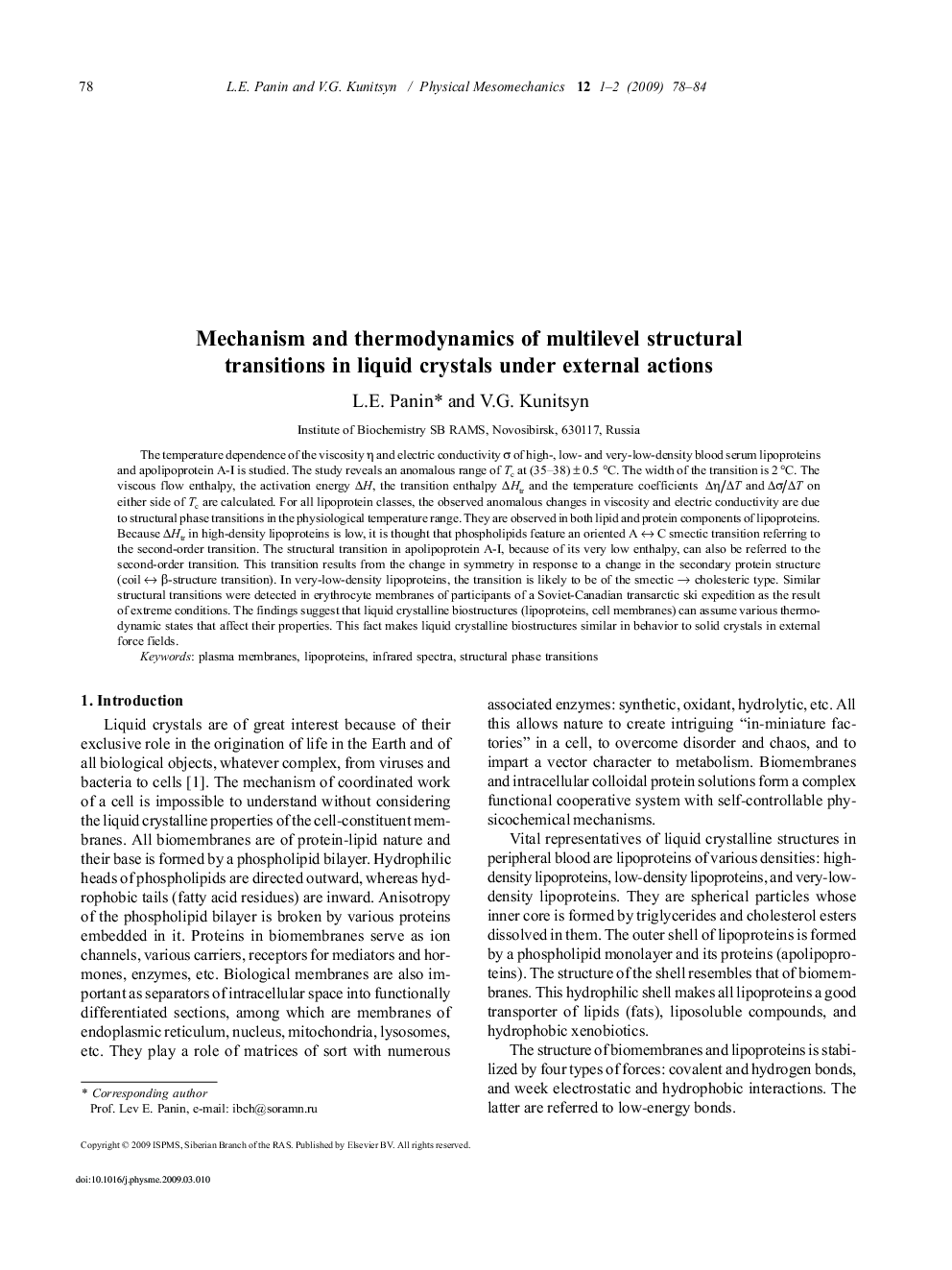| Article ID | Journal | Published Year | Pages | File Type |
|---|---|---|---|---|
| 803815 | Physical Mesomechanics | 2009 | 7 Pages |
Abstract
The temperature dependence of the viscosity η and electric conductivity Ï of high-, low- and very-low-density blood serum lipoproteins and apolipoprotein A-I is studied. The study reveals an anomalous range of Tc at (35-38) ± 0.5 °C. The width of the transition is 2 °C. The viscous flow enthalpy, the activation energy ÎH, the transition enthalpy ÎHtr and the temperature coefficients Îη/ÎT and ÎÏ/ÎT on either side of Tc are calculated. For all lipoprotein classes, the observed anomalous changes in viscosity and electric conductivity are due to structural phase transitions in the physiological temperature range. They are observed in both lipid and protein components of lipoproteins. Because ÎHtr in high-density lipoproteins is low, it is thought that phospholipids feature an oriented A â C smectic transition referring to the second-order transition. The structural transition in apolipoprotein A-I, because of its very low enthalpy, can also be referred to the second-order transition. This transition results from the change in symmetry in response to a change in the secondary protein structure (coil â β-structure transition). In very-low-density lipoproteins, the transition is likely to be of the smectic â cholesteric type. Similar structural transitions were detected in erythrocyte membranes of participants of a Soviet-Canadian transarctic ski expedition as the result of extreme conditions. The findings suggest that liquid crystalline biostructures (lipoproteins, cell membranes) can assume various thermo-dynamic states that affect their properties. This fact makes liquid crystalline biostructures similar in behavior to solid crystals in external force fields.
Related Topics
Physical Sciences and Engineering
Engineering
Mechanical Engineering
Authors
L.E. Panin, V.G. Kunitsyn,
